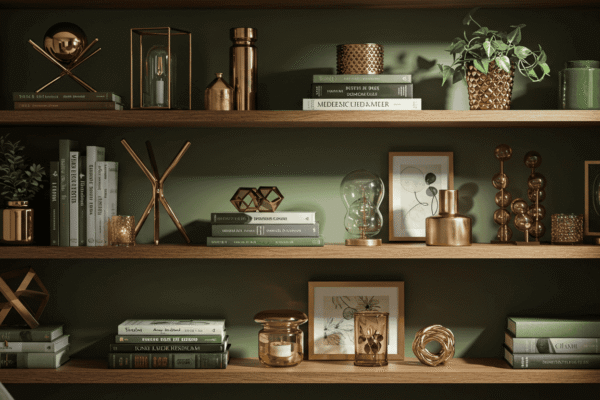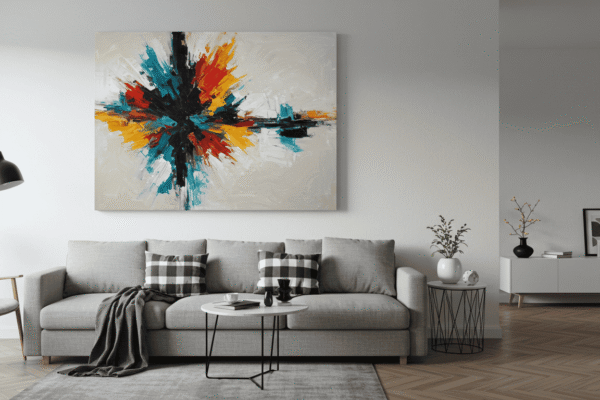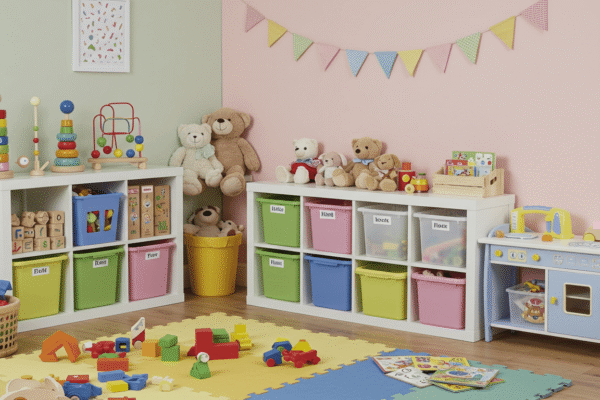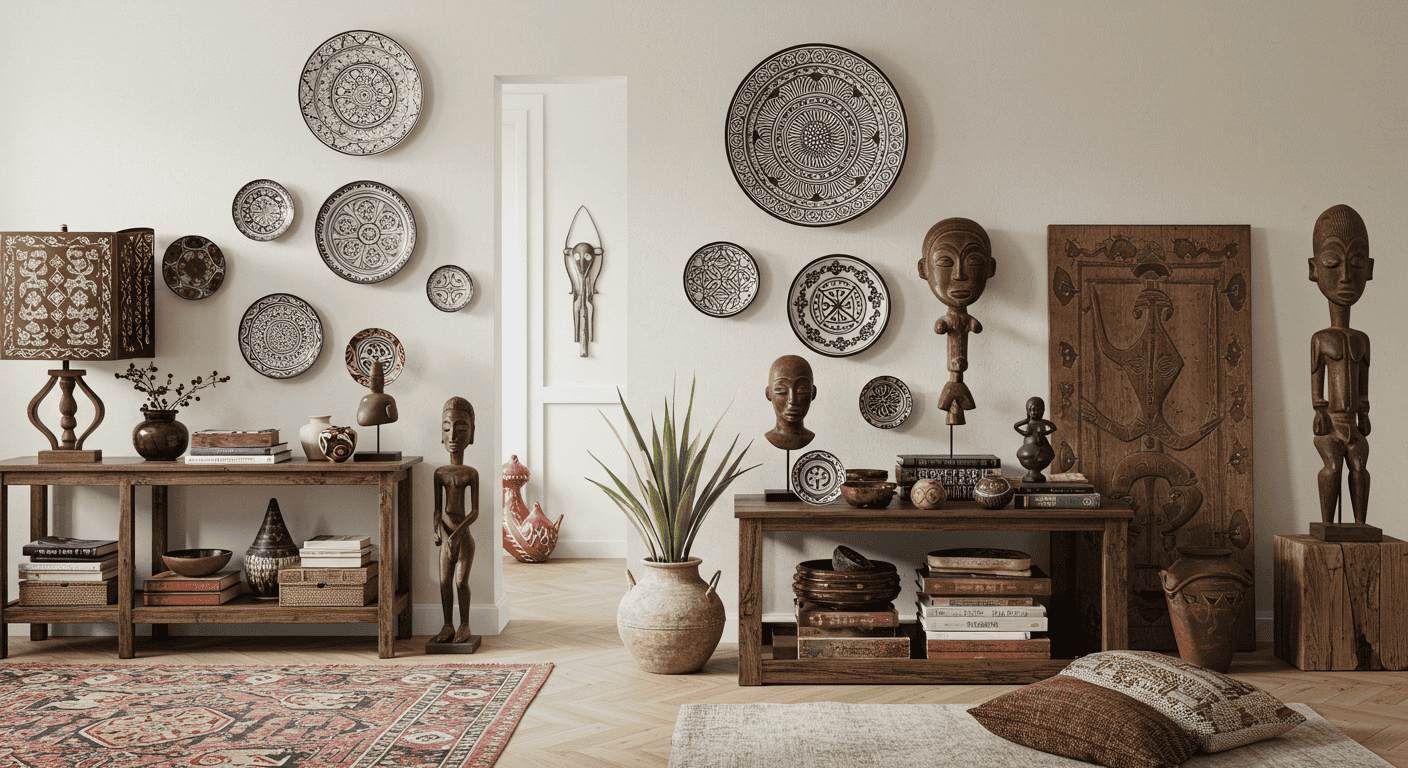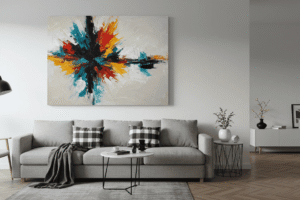Transforming a living space with cultural treasures from travels is a deeply personal and creative way to approach Home Decor. It replaces mass-produced uniformity with objects that carry memory, story, and soul. Each thoughtfully chosen piece—be it a hand-loomed textile, carved wooden figure, ceramic bowl, or lantern—adds a layer of narrative, making a room feel emotionally resonant and visually distinct. Curating Home Decor with travel finds isn’t about cluttering a house with souvenirs; it’s about creating a cohesive design language that honors craft heritage and celebrates global perspectives. With intention and restraint, this results in a timeless interior that evolves as journeys continue, turning the home into a sanctuary of stories that inspire daily life.
Why Travel-Inspired Home Decor Matters
Travel-inspired Home Decor is valuable because it captures the essence of meaningful experiences and preserves them in daily life. It transforms rooms into spaces that nurture memory, identity, and aspiration. When chosen carefully, objects contribute more than beauty; they bring cultural context, regional techniques, and symbolic motifs. This enhances appreciation for craftsmanship and history. Moreover, it boosts well-being by surrounding the household with reminders of growth, discovery, and gratitude. Instead of following trends, the home becomes a gallery of personal milestones and lessons learned. A narrative-driven approach ensures the interior feels cohesive and calming, not busy or fragmented.
Creating a Home That Tells a Story
A home embracing travel finds through Home Decor becomes a living autobiography, with objects serving as chapters and rooms as volumes in a series. A Berber rug might anchor a seating area, its motifs reflecting heritage and community; a set of handmade bowls could recall a cooking class in a distant market; and a photograph of a street scene invites guests to imagine the sights, sounds, and smells of a city square. To build a cohesive narrative, define what the story should convey—hospitality, serenity, curiosity, or resilience—and use objects to express those values. Group pieces by theme, geography, or material, and leave negative space around them so each item can be appreciated. Curating displays with breathing room ensures the story is clear and the atmosphere remains tranquil.
Culture as a Daily Inspiration
Travel-inspired Home Decor becomes a source of everyday inspiration. A lantern casting patterned light encourages slower evenings; a Japanese shoji-inspired screen invites mindfulness; and a woven basket from a coastal town makes tidying a thoughtful ritual. These objects subtly shape habits, serving as reminders of lessons learned on the road—patience, openness, and creativity. Over time, the home evolves into a practice space for the values collected on the journey, reinforcing identity and offering ongoing motivation to keep exploring and connecting.
Choosing the Right Travel Pieces
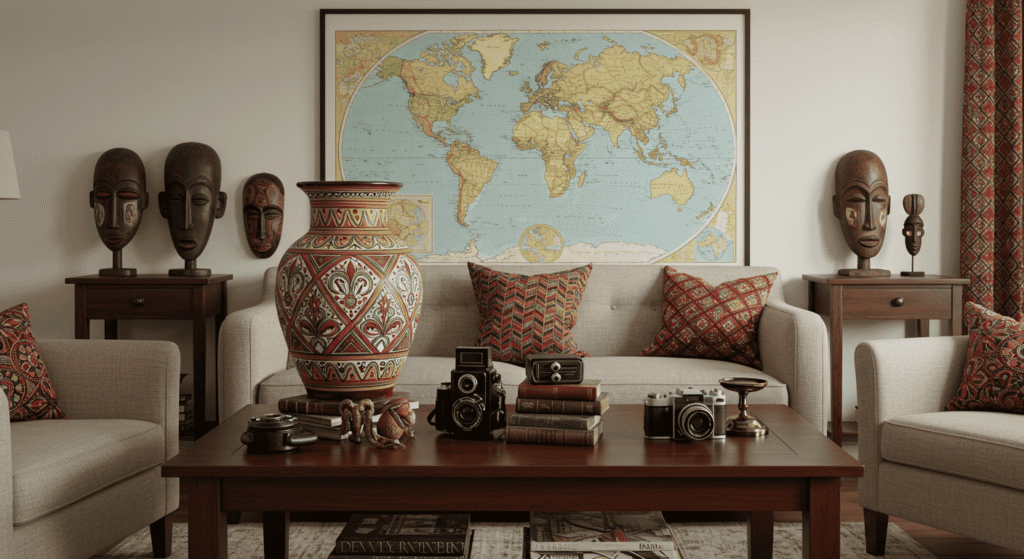
Not every beautiful object fits every room, and the difference between a curated home and a crowded one lies in the art of selection. For enduring Home Decor, consider authenticity, scale, durability, and integration with existing palettes and proportions. Favor handmade items with provenance, and respect the cultural significance behind materials and motifs. Ask practical questions: Will this piece thrive in this climate? Does it need special care? Can it serve a purpose as well as a presence? A limited number of strong pieces often communicates more clearly than a large number of small, competing objects. Editing empowers each item to shine and allows spaces to remain restful and functional.
Focus on Authenticity
Authenticity is key to meaningful Home Decor inspired by travel. Choose artisan-made items from trusted sellers or directly from craftspeople whenever possible. Handmade textiles, carved wood, and ceramics carry subtle irregularities—minute variations in weave, tool paths, and glaze—that mass-produced objects cannot replicate. These marks of craftsmanship add warmth and character, honoring the cultural lineage behind the piece. When buying remotely, research the maker or cooperative, look for fair-trade certifications, and understand the materials used. This ensures that the investment nurtures both the home and the communities behind the craft.
Mixing Big and Small Items
Balance is essential when integrating travel finds into Home Decor. A mix of large focal points and smaller accents creates a dynamic yet harmonious composition. For example, a carved console, large textile, or striking ceramic vessel can serve as a statement piece, while smaller elements echo its color, material, or motif. This approach helps guide the eye without overwhelming the space. Smaller items can be rotated seasonally, while anchor pieces stay as steady references for the room’s theme. It also helps with budget and space constraints, allowing creativity to flourish without overwhelming storage or surfaces.
Blending Cultures Seamlessly
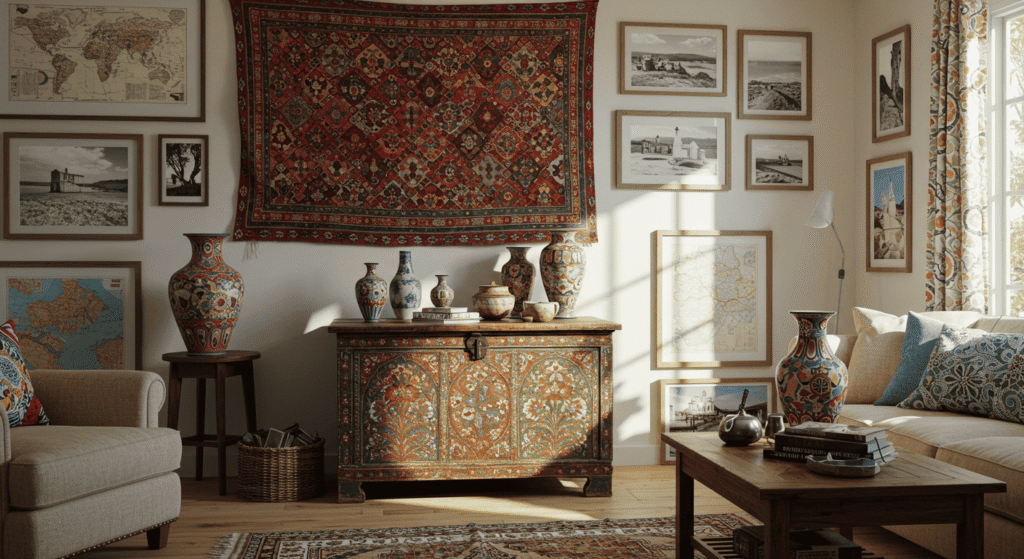
Thoughtful blending elevates Home Decor from a collection of objects to a unified atmosphere that celebrates multiple cultures without diluting any. Cohesion comes from repeating design elements—colors, materials, finishes, or forms—so that even contrasting pieces feel connected. Use a neutral backdrop to let vibrant patterns and textures breathe, and repeat tones across the room to stitch together influences. Establish a maximum of two dominant cultural themes per space, then incorporate others as gentle accents. This editorial mindset maintains clarity and respect, allowing each tradition to be seen for its strengths while contributing to a collective whole that feels calm, inviting, and uniquely personal.
Create a Cultural Fusion
Successful fusion relies on contrast and continuity in equal measure. Pair the quiet lines of Japanese minimalism with the saturated hues of Andean textiles, or set Mediterranean ceramics against African woods, unifying them through shared metal finishes or common palettes. Transitional objects—like a woven bench with modern legs or a contemporary frame around a traditional textile—help create dialogue between eras and regions. Done well, fusion becomes intentional and sophisticated, honoring multiple heritages while forming a signature style.
Avoiding Cultural Clutter
Restraint is an act of respect as much as it is a design principle. Show fewer pieces and give them more space so they can be seen, understood, and cared for. Rotate displays to keep the environment dynamic, and group related items—by material, origin, or color—so that each vignette has internal coherence. Avoid placing too many highly detailed pieces together; instead, intersperse areas of calm with clear surfaces or monochrome textiles to rest the eye. By editing with intention, the home feels serene, and the meaning of each cultural object becomes clearer and more powerful.
Incorporating Textiles for Warmth
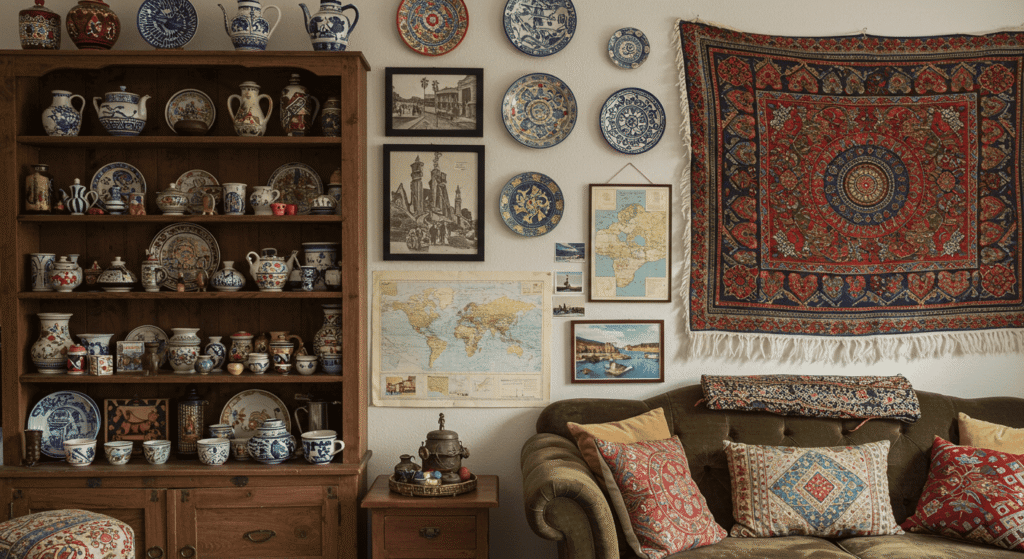
Textiles are highly expressive in Home Decor, offering color, pattern, and texture in a flexible format that can be layered, rotated, and repurposed. Rugs define zones and absorb sound; throws add comfort and rhythm; cushions introduce motifs at an approachable scale; wall hangings create tactile focal points. Textiles engage both sight and touch, adding warmth and a sense of welcome. Their traditional techniques anchor the space in cultural history.
Rugs with Stories
A well-chosen rug can headline a room’s narrative. Hand-knotted, flat-woven, or tufted—each construction method yields a distinct surface and character suited to different uses. A Berber rug might provide a neutral base with graphic geometry, while a Persian piece offers depth through layered florals and complex borders. Size, pile height, and fiber composition influence comfort and maintenance: wool is resilient and forgiving; cotton breathes and cleans easily; silk adds sheen and delicacy best reserved for low-traffic areas. By selecting a rug whose colors coordinate with existing upholstery and finishes, the room gains a cohesive foundation that supports additional cultural layers without visual strain.
Layering for Comfort and Culture
Layering textiles introduces richness and allows multiple traditions to coexist gracefully within Home Decor. Place a flat-woven kilim atop a larger neutral rug to add pattern without overwhelming the space, or drape a hand-loomed throw over the back of a sofa to pull a secondary color into the seating area. Mix cushion sizes and shapes—square, lumbar, bolster—and vary textures—linen, wool, silk, embroidered cotton—for depth. Keep a unifying thread, such as a shared hue or recurring motif, so the mix feels curated rather than chaotic. Seasonal swaps—lightweight indigos in summer, plush wools in winter—maintain freshness and honor the rhythms of daily life.
Decorating Walls with Cultural Flair
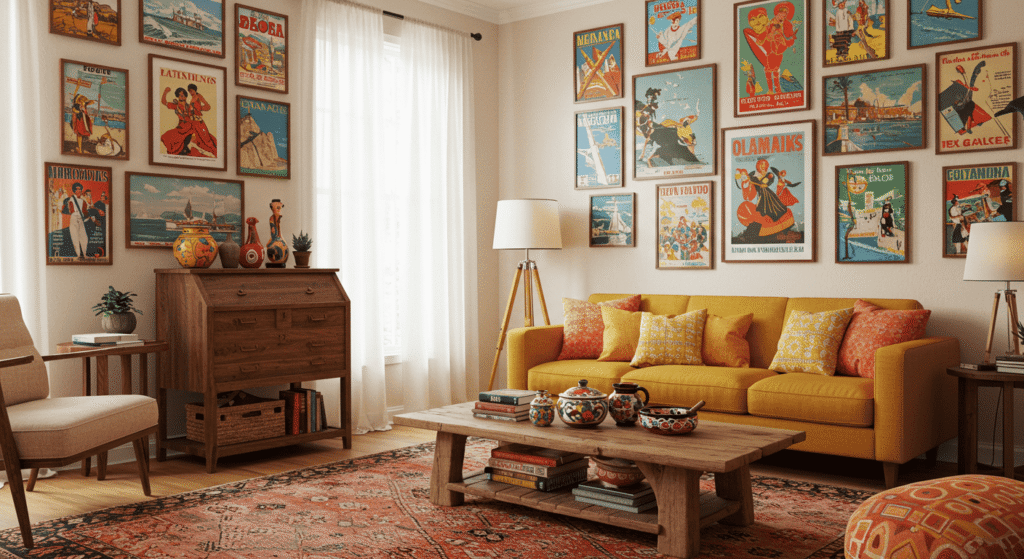
Walls provide generous real estate for storytelling and are essential in balancing the visual weight of Home Decor throughout a room. Whether showcasing framed artworks, woven tapestries, wooden reliefs, or photographic series, vertical displays anchor sightlines and set tone. Choose placements that align with furniture groupings and traffic flow: above consoles, alongside reading chairs, or flanking entryways. Maintain consistent margins and sight heights to encourage visual calm, and combine pieces with complementary palettes or materials so that the arrangement reads as a single composition rather than isolated points of interest.
Framed Art and Prints
Framing is as important as the artwork itself in Home Decor. A contemporary, minimal frame can modernize a traditional print; a hand-finished, warm wood frame can dignify a simple sketch or market postcard. Consider mats to introduce breathing room around intricate pieces, and use non-glare or UV-protective glazing to safeguard delicate works. Curate a gallery wall by aligning edges or centering around a horizontal axis, repeating frame finishes or mat colors to create cohesion. Mix media—photography, ink drawings, textiles—while maintaining a steady rhythm of scale and spacing.
Mixing Modern and Cultural Elements
Integrating modern framing techniques, lighting, and spacing with cultural artifacts elevates both. A tribal mask under focused lighting becomes sculpture; a textile framed in acrylic reads as contemporary art while remaining protected. This balance between old-world craftsmanship and modern presentation prevents spaces from feeling like set pieces, helping Home Decor reflect both present sensibilities and historical depth.
Incorporating Functional Cultural Decor
Objects that are both beautiful and useful bring culture into daily rituals and foster lasting engagement. Functional pieces—ceramics, utensils, trays, stools, baskets—earn their place by participating in life rather than sitting behind glass. This approach is sustainable and joyful: it distributes visual interest across activity zones and transforms everyday tasks into opportunities for appreciation. Over time, patina and wear tell a secondary story about life lived well, deepening the bond between household and object.
Ceramics and Pottery
Ceramics are a cornerstone of functional Home Decor, balancing form, color, and utility. A Japanese tea set can anchor a mindful tea ritual, while a Moroccan tagine or Spanish pitcher adds sculptural presence to open shelving and invites convivial meals. When choosing ceramics, consider glaze durability, dishwasher and oven safety, and ergonomics. Harmonize glazes with countertop materials and backsplashes, and display groups by color family or form for visual cohesion. Mixing a few vintage or artisan pieces with everyday stoneware keeps the kitchen and dining spaces both practical and expressive.
Everyday Elegance
Daily use is the most natural way to integrate cultural objects into Home Decor. Drink coffee from an Ethiopian cup, use a hand-carved spoon for serving, or set a weekly dinner with a rotation of regional plates. Keep storage accessible so special pieces aren’t “too precious” to use, and embrace gentle wear as a record of memory and hospitality. By embedding culture into routine, the home gains a quietly luxurious atmosphere where meaning and function support each other.
Cultural Decor in Different Rooms
Each room presents unique opportunities for travel-inspired Home Decor, and tailoring choices to function and mood ensures that cultural elements feel at home. Living areas benefit from strong focal points and conversational objects; bedrooms favor softness and serenity; kitchens and dining rooms welcome functional beauty; entryways and halls serve as narrative overtures. Throughout, consistency in color story and material palette ties the home together while allowing each space a distinct identity.
Living Room Elegance
The living room is the stage for hospitality and storytelling. Start with a rug that sets tone and scale, then layer sculptural seating, a culturally inspired coffee table book stack, and one commanding object—perhaps a vessel, sculpture, or wall textile. Use side tables and stools from different regions to add rhythm without crowding circulation paths. Vary heights to create a skyline of interest, and add ambient lighting—lanterns, shaded lamps—to cast gentle shadows that enhance texture and relief. Keep a tray on the coffee table for rotating smaller finds, ensuring easy refreshes that keep the space lively yet curated.
Bedroom Serenity
In the bedroom, Home Decor should support rest and restoration. Choose textiles with calming palettes—indigos, sands, sages—and soft handfeel. A lightweight kantha or block-printed quilt introduces pattern at a soothing scale, while a carved headboard or woven screen adds depth without visual noise. Use shaded lights or paper lanterns for gentle diffusion, and limit high-contrast arrangements to small vignettes so the overall atmosphere remains tranquil. A small altar, shelf, or ledge with a few meaningful objects—stones, a travel photo, a small bowl—can center nightly rituals.
Kitchen and Dining Spaces
Kitchens and dining rooms celebrate functional culture. Display ceramics and baskets on open shelves; use map-inspired runners or handwoven placemats; introduce wooden boards from different regions as serving pieces and textural accents. Consider a spice library with labeled jars from markets abroad, arranged by color or origin for visual delight. On the dining table, mix glassware or napkins from different trips, balancing variation with a core palette. This is where the home’s stories meet hospitality—meals become opportunities to share origins, techniques, and traditions.
Sourcing and Caring for Travel Finds
To sustain the integrity of Home Decor and the communities behind it, source pieces responsibly and care for them properly. Research fair-trade groups, ethical marketplaces, and artisan cooperatives; when traveling, buy direct from makers when possible and learn about material origin and care. At home, protect textiles from UV exposure, rotate rugs to even wear, and keep wood nourished with appropriate oils or waxes. Document provenance—photos with artisans, notes on techniques—so stories are preserved for future generations and shared with guests who take interest.
Where to Buy Authentic Pieces
Local markets, studio visits, and reputable galleries are ideal when traveling, because they allow conversations with makers and firsthand evaluation of quality. When shopping remotely, seek vendors with transparent supply chains and cultural context for each piece. Read about the craft’s tradition and the region’s materials, and favor platforms that work directly with cooperatives or artist-run shops. For ongoing inspiration and design context, trusted publications like Architectural Digest offer perspectives on integrating global craft with modern interiors, helping buyers make informed, tasteful choices.
Sustainable Shopping
Responsible decorating goes beyond aesthetics—it protects people and the planet. Select items made from renewable or ethically harvested materials. Avoid endangered woods, animal products, or anything that threatens local ecosystems. Whenever possible, consolidate orders or buy locally to reduce shipping emissions.
Remember: the most sustainable pieces are those loved and used for years. Choose objects that resonate deeply, that you’ll still appreciate decades from now. Well-made, meaningful decor ages beautifully, collecting patina and story with time.
Sustainability also means mindful consumption. Before buying, ask yourself: Does this item serve a purpose? Will it harmonize with my current space? Does it respect the culture it represents? If the answers are yes, it’s a piece worth bringing home.
Conclusion: Home Decor as a Global Expression
Travel-inspired Home Decor transforms a home into a living museum of personal history. Each piece tells a story—of craftsmanship, discovery, and shared humanity. By blending cultural treasures with intention and authenticity, your home becomes more than just beautiful—it becomes soulful.
This approach celebrates both artistry and empathy. It honors the hands that create, the journeys that teach, and the spaces that nurture belonging. Over time, your surroundings evolve into a sanctuary of stories—each rug, bowl, and lantern carrying whispers of distant lands and the spirit of connection that unites them all.
Your home, in essence, becomes a world within walls—an inspiring reflection of where you’ve been, who you’ve met, and how beautifully diverse our planet truly is.


